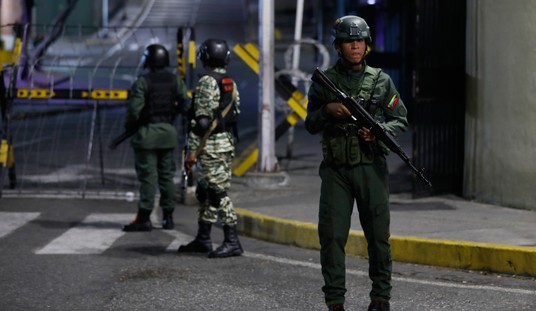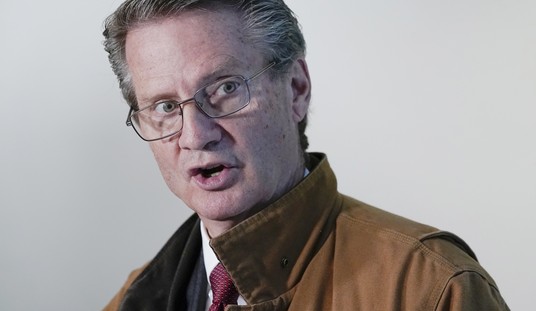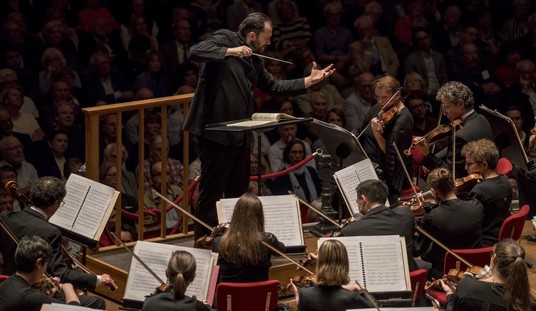New York Times columnist Paul Krugman claims that Republicans who want to trim back welfare spending are waging a "war on the poor." My colleagues and I at the National Center for Policy Analysis think it's the other way around: it's the welfare state and its apologists who are really harming the poor.
Who is right?
Currently, the federal government spends about $1 trillion a year on 126 means tested welfare programs. That amounts to almost $22,000 for every poor person in America, or $88,000 for a family of four.
There can be little doubt that these programs are destroying the culture of the recipient communities. They are replacing a culture of self-reliance and self-help with a culture of dependency. Amazingly, a record 91.5 million people of working age — almost one third of the entire population — are not working and not even looking for a job.
How Culture Matters
The Dallas Independent School District recently announced that every student in the school district will now get a free breakfast and a free lunch. The reason? So few students qualified for "full price" or "reduced price" meals that trying to identify them cost more than it was worth. And as I pointed out at my blog, kids who receive free lunches and breakfasts are increasingly getting a free supper as well. Think about that. We have decided that the parents of every single child attending public school in Dallas are too poor to feed their own kids.
Have you ever stopped to consider how much of modern life is conditioned by the fact that millions of young women are having children they cannot support? Turns out that the same parents who can't afford to feed their children also can't afford to house them or pay for their medical care. They also fail to provide a home environment that is conducive to learning. That's why there is now a big push for government funded preschool.
Recommended
Clearly we are not helping a few people down on their luck. We are subsidizing a way of life.
And a culture. Another recent article in The Dallas Morning Newsreported that 11 public schools that were temporarily closed in South Dallas have been vandalized:
"Anytime you leave something closed in South Dallas, they are going to tear it up and destroy it," said Tim Sweet, who has lived across the street from [Pearl C. Anderson Middle Learning Center] for 20 years. "It's just a waste of money."
By way of contrast, on my morning jaunt in North Dallas I pass daily by a home that has been boarded up for more than a month and there is not a spec of graffiti anywhere on it.
A One-sided Debate
When it comes to welfare, we are not having a real debate. On the one side there is scholarship. On the other side there is invective.
The scholarly works on this topic range from George Gilder's Wealth and Poverty (1981) to Charles Murray's Losing Ground (1984) and more recently to Charles Murray's Coming Apart (2012). In The Redistribution Recession (2012), University of Chicago economist Casey Mulligan concludes that half of the excess unemployment we are experiencing is due to programs that are paying people not to work. (See my review here.) Other serious economic studies also lend support to the conservative point of view.
I am not aware of even a single book or study on the left that proposes a credible alternative explanation of what is going on. Along with other New York Times readers, however, I am regularly exposed to arguments ad hominem in the columns of Paul Krugman. This is from his latest:
Republican hostility toward the poor and unfortunate has now reached such a fever pitch that the party doesn't really stand for anything else — and only willfully blind observers can fail to see that reality…
They're still clearly passionate about making sure that the poor and unlucky get as little help as possible…
So there is indeed a war on the poor, coinciding with and deepening the pain from a troubled economy. And that war is now the central, defining issue of American politics.
Why does he bother? It is now well known that folks to the right of center actually care more about people in need than people on the left. They give more money, more of their time, more blood, etc. (See Arthur Brooks, Who Really Cares.)
Bottom line: We're not having a debate. One side is serious. The other side is slinging epithets.
The Race Card
Make the statement that "welfare causes poverty" and it won't be very long before you will be accused of being a racist. Krugman does that routinely. In his latest column on the subject, he cites the results of a left wing public opinion poll:
They found the Republican base "very conscious of being white in a country that is increasingly minority" — and seeing the social safety net both as something that helps those people, not people like themselves, and binds the rising nonwhite population to the Democratic Party. And, yes, the Medicaid expansion many states are rejecting would disproportionately have helped poor blacks.
Ah yes. Ad hominem again. Let's take a brief detour and consider some evidence ? first from a country where there virtually are no whites and then from a study that focused exclusively on whites. These are two different ways of taking race out of the picture and observing whether any fundamentals change.
Barbados. This is a country that is almost all black (96%). It has some similarities to the United States. Their relative poverty rate is similar, their welfare programs are similar and their out-of wedlock birth rate is similar. But, there the similarity ends. Since the 85% of the population that is not poor is also non-white, Barbados is an island nation with its own black culture. And it's a remarkable one.
Barbados has one of the highest literacy rates in the world. Its income per capita is one of the highest in the Caribbean. One reason for these accomplishments is the heavy emphasis the Barbadians place on education. Secondary education in Barbados is like our university system in the United States. Students (and their parents) can choose what school they want to attend, but they have to be accepted. Competition is fierce to get into the highest performing institutions. Do you know someone who thinks school choice is bad for black kids? Send them to Barbados.
You don't have to do a formal study to know that the culture of Barbados is different. Climb in any taxi cab once you arrive there. With little prompting the driver will probably tell you all about his own children's school choices and their aspirations. (See my Howard Law Review article.)
A high percent of high school graduates from Barbados are admitted to Ivy League colleges in the United States. In fact a little known secret in U.S. higher education is that our elite universities are achieving their diversity goals with black students ? not from the U.S., but from the Caribbean.
Coming Apart. In his most recent book, Charles Murray describes a nation that is coming in two. One part is self-motivated, self-reliant and extremely productive. The other is basically not working at all and relies on government to meet its basic needs. And the study was devoted exclusively to non-Hispanic whites. From my review of his book:
Upper-middle class professional types may pretend that they are cultural relativists, accepting of whatever lifestyle their fellow human beings happen to choose. In reality, they live by old fashioned puritan values, however. They get married and stay married. They work hard and work long hours.
Not so for the blue collar, never-got-beyond-high-school class, however. A shocking number aren't even working at all. Many are not getting married in the first place. Of those that get married, the divorce and separation rates are soaring.
What about happiness and well-being? About 65% of the upper middle class professional types say they are in happy marriages. That number has been dropping steadily for the past 40 years for the working class types; and today it stands at 25%!
So What Can Be Done?
I'll discuss solutions in a future editorial.
























Join the conversation as a VIP Member